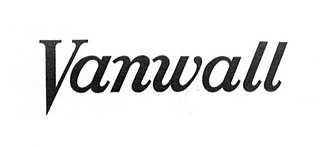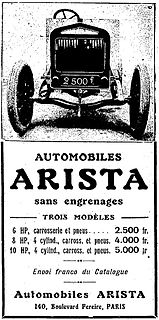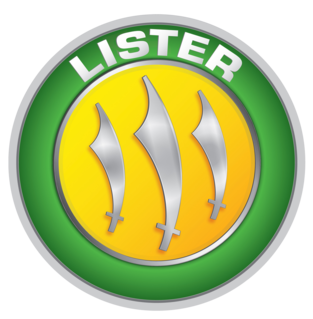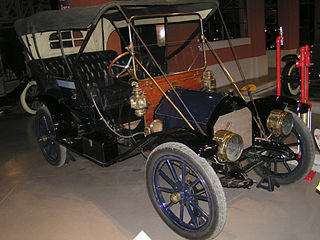 | |
| Industry | Formula 3 cars |
|---|---|
| Founder | Cyril Kieft |
| Headquarters | , UK |


Kieft Cars, founded by Cyril Kieft, was a British car company that built Formula Three racing cars and some road going sports cars in a factory in Derry St, Wolverhampton. [1]
 | |
| Industry | Formula 3 cars |
|---|---|
| Founder | Cyril Kieft |
| Headquarters | , UK |


Kieft Cars, founded by Cyril Kieft, was a British car company that built Formula Three racing cars and some road going sports cars in a factory in Derry St, Wolverhampton. [1]
Cyril Kieft was born in Swansea and spent his early working life in the steel industry. After the Second World war he started up his own company Cyril Kieft and Co Ltd in Bridgend, Glamorgan, making forgings and pressings including components for the motor industry. He had an interest in motor racing and, when the Formula Three car manufacturer Marwyn failed, he bought their designs and used them as a base for his own 500cc car. Several of these were sold and some competition success resulted. Publicity was gained by successful attempts on a series of records at Montlhéry in France. One of the drivers was Stirling Moss, who explained the shortcomings of the cars. As a result of this, a new design was acquired, Moss and his manager Ken Gregory became directors, and the company moved to new premises at Reliance Works in Derry Street, Wolverhampton. [2] [1]
A new design by Gordon Bedson, who had joined the company from the aircraft industry, was produced in time for the 1951 Whit Monday Meeting at Goodwood where it won the Formula Three event driven by Moss. Don Parker was employed as works driver and won the British Formula Three Championship in 1952 and 1953. [1]
Between 1953 and 1954, Kieft designed a Formula One car. It was designed to accommodate a Coventry-Climax Godiva engine, but the engine was not released in time due to fears it would be uncompetitive, and the project was shelved. It would later be acquired by Bill Morris, a former ERA driver, and restored for historic racing. The car finally debuted in September 2002 at a VSCC Silverstone meeting, with Cyril Kieft in attendance. [3] It also raced in the 2006 Historic Grand Prix of Monaco.
In 1954, Kieft started to make a two-seater sports car which could also be used as a road car. Using a Coventry Climax FWA engine, all independent suspension using transverse leaf springs at the rear and a lightweight glass fibre body the car was really a racing car and at £1560 it is doubtful if any were bought just as road cars. [1]
The company was losing money and at the end of 1954 Kieft sold the company to racing driver Berwyn Baxter.
Kieft Cars left Wolverhampton in 1956 and moved to nearby Birmingham, where they concentrated on preparing and tuning other makes of cars. There were plans for a return to making Kieft cars but these failed to materialise. The company was sold again in 1960 and changed its name to Burmans.

Sir Stirling Craufurd Moss was a British Formula One racing driver. An inductee into the International Motorsports Hall of Fame, he won 212 of the 529 races he entered across several categories of competition and has been described as "the greatest driver never to win the World Championship". In a seven-year span between 1955 and 1961 Moss finished as championship runner-up four times and in third place the other three times.

Vanwall was a motor racing team and racing car constructor that was active in Formula One during the 1950s. Founded by Tony Vandervell, the Vanwall name was derived by combining the name of the team owner with that of his Thinwall bearings produced at the Vandervell Products factory at Acton, London. Originally entering modified Ferraris in non-championship races, Vanwall constructed their first cars to race in the 1954 Formula One season. The team achieved their first race win in the 1957 British Grand Prix, with Stirling Moss and Tony Brooks sharing a VW 5, earning the team the distinction of constructing the first British-built car to win a World Championship race. Vanwall won the inaugural Constructors' Championship in Formula One in 1958, in the process allowing Moss and Brooks to finish second and third in the Drivers' Championship standings, winning three races each. Vandervell's failing health meant 1958 would be the last full season; the squad ran cars in a handful of races in the following years, but finished racing in 1961.

The Cooper Car Company is a British car manufacturer founded in December 1947 by Charles Cooper and his son John Cooper. Together with John's boyhood friend, Eric Brandon, they began by building racing cars in Charles's small garage in Surbiton, Surrey, England, in 1946. Through the 1950s and early 1960s they reached motor racing's highest levels as their rear-engined, single-seat cars competed in both Formula One and the Indianapolis 500, and their Mini Cooper dominated rally racing. The Cooper name lives on in the Cooper versions of the Mini production cars that are built in England, but is now owned and marketed by BMW.

Formula Two, abbreviated to F2, also called Formula 2, is a type of open-wheel formula racing category first codified in 1948. It was replaced in 1985 by Formula 3000, but revived by the FIA from 2009–2012 in the form of the FIA Formula Two Championship. The name returned in 2017 when the former GP2 Series became known as the FIA Formula 2 Championship.
Harry Ferguson Research Limited was a British company founded by Harry Ferguson who was mostly known as "the father of the modern farm tractor". He was also a pioneer aviator, becoming one of the first to build and fly his own aeroplane in Ireland, and also went on to develop four-wheel drive systems for cars including pioneering their use in Formula One racing cars. The company was based in Siskin Drive, in Coventry, England.

The Arista was a French automobile which took its name from its founder, one P. Arista-Ruffier; the marque was manufactured by the Établissements Ruffier in Paris from 1912 to 1915. Eight models were introduced in the first year of production. These were a 720 cc single cylinder cycle car, fours of 1460cc, 1726 cc, and 1847 cc which featured friction drive and were sold complete with bodywork and tires, and fours of 1460 cc, 1593 cc, 1847 cc, and 2001 cc with conventional gearboxes; these last were sold as untired chassis.

Coventry Climax was a British forklift truck, fire pump, racing, and other specialty engine manufacturer.

Lea-Francis was a British motor manufacturing company that began by building bicycles.
British Racing Partnership (BRP) was a racing team, and latterly constructor, from the United Kingdom. It was established by Alfred Moss and Ken Gregory – Stirling Moss's father and former manager, respectively – in 1957 to run cars for Stirling, when not under contract with other firms, along with other up-and-coming drivers.
Shannon Racing Cars was a Formula One constructor from the United Kingdom with Aiden Jones, formerly a mechanic for Prince Bira and Prince Chula, and Paul Emery as the principals. Using a car built by former Emeryson designer Emery and an old Coventry Climax engine, they participated in a single Grand Prix. Trevor Taylor drove for the team at the 1966 British Grand Prix, retiring early in the race. The car was then used for Formula 3 until 1969.

The Lister Motor Company Ltd. is a British sports car manufacturer founded by Brian Lister in 1954 in Cambridge, England, which became known for its involvement in motorsport. After buying the company in 1986, Laurence Pearce produced variants of the Jaguar XJS before producing a bespoke sports car, the Lister Storm. In 2013, Lister Cars was acquired by Lawrence Whittaker's company Warrantywise. Production of the original sports car restarted in 2014 and ten continuation Lister Jaguar Knobblys were built to celebrate Lister's 60th Anniversary. In 2016, the company announced the build and sale of the Lister Knobbly Stirling Moss. On 31 January 2018, the Lister LFT-666 based on the Jaguar F-Type was announced.

Turner Sports Car Company Limited was a 1950s British sports car manufacturer, that closed in 1966.

The Everitt was an American automobile manufactured from 1909 until 1912 by the Metzger Motor Car Company in Detroit.
The Flaid was a Belgian automobile manufactured from 1920 until 1921 in Liège. A 10/12 hp light car with 1095 cc four-cylinder engine, it was designed for export to Britain. A stand was booked at the 1920 British Motor Show but the car never appeared.

Meadows Frisky is the name of a series of small British cars manufactured at the factory of Henry Meadows Ltd at Fallings Park in Wolverhampton between 1958 and 1961, during which time, production was under the control of a number of companies.

The Keystone Motor Company of Philadelphia was the manufacturer of an early automobile in 1900.
George Nicholas "Nick" Georgano was a British author, specialising in motoring history. His most notable work is The Complete Encyclopedia of Motorcars, first published in 1968.

Erling Poppe was an Austrian-born English-raised motor vehicle designer who studied engineering in Birmingham, England, and designed Packman & Poppe Motorcycles, Sunbeam motorcycles and Gordon three-wheeler cars.
Don Parker was a British racing driver from England who was British Formula Three Champion on three occasions. He also competed in the British Saloon Car Championship.
Miesse was a Belgian maker of cars and trucks, active from 1894 to 1974.
| Wikimedia Commons has media related to Kieft vehicles . |